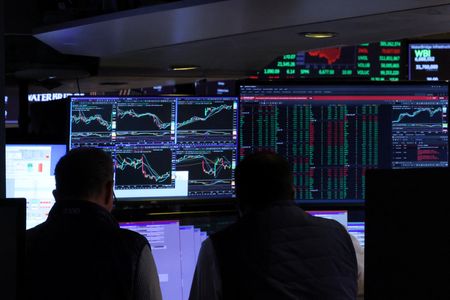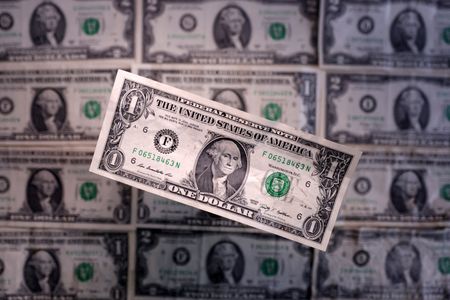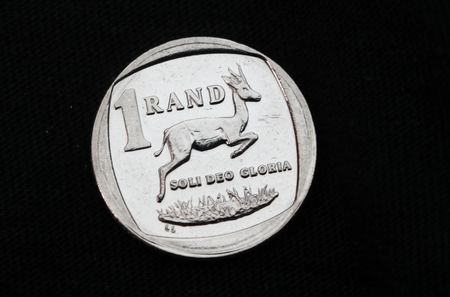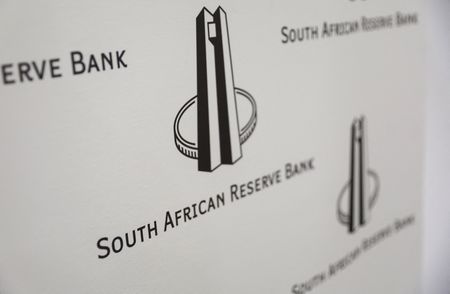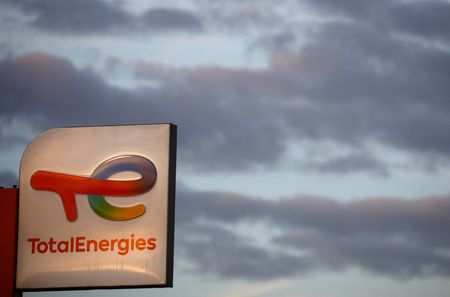By Chibuike Oguh
NEW YORK (Reuters) – World equity markets reached a new peak on Thursday, powered by a continuing bull run on Wall Street, while the U.S. dollar rose against major peers on news that fewer Americans filed new applications for unemployment benefits last week.
The pound dipped slightly after the Bank of England kept rates unchanged.
Benchmark S&P 500, the Dow and the Nasdaq all posted record closing highs. Intel jumped more than 22% after Nvidia said it would invest $5 billion in the struggling U.S. chipmaker. Nvidia’s shares closed up 3.5% on the day.
The Dow Jones Industrial Average rose 0.27% to 46,142.42, the S&P 500 climbed 0.48% to 6,631.96 and the Nasdaq Composite advanced 0.94% to 22,470.73.
The small-cap Russell 2000 index rose and touched an intraday record high for the first time since November.
The pan-European STOXX 600 index gained 0.8%. MSCI’s gauge of stocks across the globe rose as high as 981.65, topping the previous session’s record. It was last up 0.29% at 979.18.
The Fed cut rates by 25 basis points on Wednesday and its closely watched “dot plot” had pointed to two more rate cuts over its remaining two meetings this year, but only one additional reduction in 2026.
“The market is getting a little priced for perfection, and some of the job erosion is a little unsettling, which is what I think probably led (Fed Chair) Jerome Powell to make his cut yesterday and sort of say he’s going to continue to be data dependent,” Sandy Villere, portfolio manager at Villere & Co in New Orleans.
“The economy in general, between the eroding job numbers and inflation, has kind of stabilized – although you can never fight the Fed and falling rates, which is what I think got the market popping today with a little follow-through,” Villere said.
The yield on benchmark U.S. 10-year notes rose 3.2 basis points to 4.108%.
The Bank of England voted 7-2 to keep rates unchanged at 4% while slowing the annual pace at which the central bank sells gilts it purchased between 2009 and 2011 to 70 billion pounds from the current 100 billion pounds, in line with economists’ forecasts.
The dollar strengthened 0.52% to 0.793 against the Swiss franc and was up 0.67% at 147.95 against the Japanese yen.
While data showed fewer Americans filed new applications for unemployment benefits last week, the labor market has softened as both demand for and supply of workers have diminished.
The euro fell 0.23% to $1.1785 while the sterling weakened 0.56% to $1.355. The dollar index rose 0.43% to 97.37.
Norway’s central bank cut its policy interest rate by 25 basis points to 4.0%, as widely expected, and said it aims to cut again in the next 12 months but not as much as previously planned. The Norwegian krone remained near a three-year high.
Germany’s parliament approved the nation’s first annual budget since sweeping reforms to loosen fiscal rules were passed earlier this year. In France, hundreds of thousands took part in anti-austerity protests, unions said, urging President Emmanuel Macron and his new Prime Minister Sebastien Lecornu to acknowledge their anger and scrap looming budget cuts.
The yield on German 10-year Bunds, the benchmark for the euro zone bloc, rose 1.2 basis points to 2.727%.
Oil prices fell. Brent crude futures dropped 0.8% to settle at $67.44 a barrel, while U.S. West Texas Intermediate (WTI) crude fell 0.8% to settle at $63.57.
Gold prices took a breather from record highs. Spot gold fell 0.38% to $3,645.89 an ounce.
(Reporting by Chibuike Oguh in New York; additional reporting by Caroline Valetkevitch; editing by Andrew Heavens, Philippa Fletcher, Nick Zieminski and Richard Chang)

